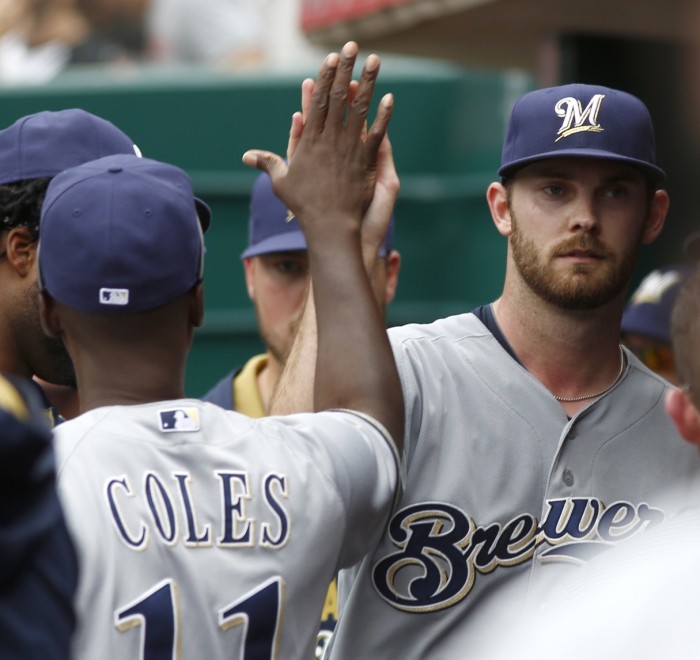At the time of writing this article, there are only thirty-one games left in the Brewers season. Currently, Milwaukee is 56-75. Even if the Brewers were to go on an impossible thirty-one game win streak, they would finish the season 87-75, only one win ahead of the Cardinals’ current record of 86-46. Since May, the Brewers have experienced a positive trend in on-base percentage and runs scored. However, in that same time, the only other team that has allowed more runs than the Brewers has been the Reds.
With the plethora of things that went wrong, it too quickly dismisses the many things that went right. Indeed, the offense has been performing rather well; though, it is the poor pitching that has been the bane of this team. When looking back on the 2015 season, as painful as it may be, remember that this team is not as bad as it seems. Although Milwaukee is not likely to contend for a playoff in 2016, the Brewers have the potential to be in good shape next year.
At the beginning of the season, the Brewers were absolutely dreadful in the most pertinent run-scoring stat: on-base percentage. However, if you recall in my recap of game one-hundred ten, there has been consistent improvement in getting men on base. In fact, with the exception of the Pirates, as the Brewers have improved with getting men on the bags, the other teams in the division have either seen their on-base percentage decline or remain inconsistent. Of course, it is not enough that men get on base. Bringing those base runners around to score is the ultimate goal, and it is another area in which the Brewers have done well thus far.
| Team | SLG w/ RISP | Avg w/ RISP |
|---|---|---|
| Brewers | .415 | .266 |
| Cardinals | .371 | .249 |
| Cubs | .366 | .235 |
| Pirates | .405 | .271 |
| Reds | .354 | .215 |
Throughout the season, Milwaukee has been more successful than their division at hitting for extra bases with runners in scoring position and are only second to Pittsburgh in overall hits with men in scoring position. In fact, since May, the only team that has outscored the Brewers has been the Pirates, who have scored 457 runs to Milwaukee’s 450. Above all else, the offense has been and will be fine.
If we look at run differential from month-to-month, the only month in which the Brew Crew had a positive run differential was in July. Despite outperforming and improving more so than most of the NL Central in on-base percentage and runs scored, the Brewers were also really good at giving up runs. Moreover, when looking at how many games the Brewers have won in relation to the number of runs scored and runs allowed, it becomes clear that the sheer number of runs allowed has stymied any offense that the Milwaukee has been able to muster.
| Runs Scored | W-L |
|---|---|
| 0-3 | 7-59 |
| 4+ | 43-15 |
| Runs Allowed | W-L |
|---|---|
| 0-3 | 38-16 |
| 4+ | 14-52 |
Essentially, the Brewers have to score at least four runs to avoid a loss. Unfortunately, the team also has to prevent their opponent from scoring at least four runs to ensure that they can maybe secure a win.
The problem lies foremost with the starting pitching. With the exception of Nelson and Jungmann, the rotation has been abysmal. In fact, Milwaukee’s starting five rank 26th in the league in DRA, 21st in FRA, and 20th in VORP — 4.73, 4.55, and 62.0, respectively. How has that cost the team? When compared to the league average, including the bullpen, the pitching has afforded the competition 35.1 adjusted pitching runs. Likewise, the defense has been spotty at best. With a defensive efficiency of .696, Milwaukee is in poor company hanging in the bottom third of defensive rankings with Boston, Philadelphia, and Colorado. When looking at the league average for defensive runs saved, the Brewers (-27 rDRS) are ahead of only the Yankees (-33 rDRS) and Phillies (-84 rDRS) in adjusted defensive runs saved above average. It may seem as if the Brewers have a tall order to turn things around with their pitching woes being compounded by their defensive shortcomings, but there are a few things to keep in mind as we head towards the offseason.
First, the rotation, more specifically, Matt Garza, will not continue to suck. This is only the second season in which Matt Garza has posted an ERA in the 5.xx range and also been worth negative WARP (the first time was in his rookie season when he only pitched fifty innings), making this season look flukey. As our own J.P. Breen pointed out, his “underlying numbers suggest a bounce back” to his career norms as a mid-rotation starter.
Second, this season’s strong showing from Taylor Jungmann bodes well for next season. It is difficult to remain objective when discussing Jungmann; after all, he is boasting a 2.48 ERA, 2.99 FIP, and 3.01 DRA in his rookie season. More impressive, however, is his pitching acumen. Eno Sarris wrote about his calculation regarding his pitch sequencing. Having that kind of self-awareness so early in his career will pay dividends as he continues to mature. Having him near the top of the rotation, with Jimmy Nelson pitching soon after, will give the Brewers a one-two punch that has been missing.
